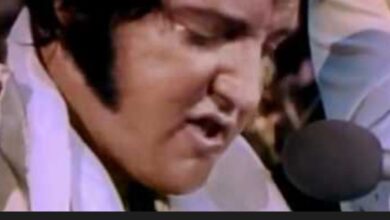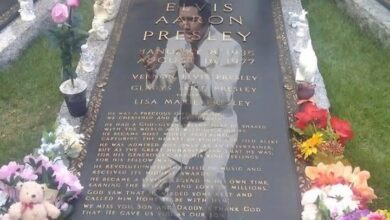Elvis’s Satellite Broadcast Was Unprecedented, Paving the Way for Future Concerts
Elvis Presley’s performance of “See See Rider” during the 1973 “Aloha from Hawaii” concert is a legendary moment in music history. The concert, held at the Honolulu International Center and broadcast via satellite, was a groundbreaking event that reached over a billion viewers worldwide. Elvis, dressed in his iconic American Eagle jumpsuit, opened the show with a powerful rendition of “See See Rider,” showcasing his dynamic stage presence and vocal prowess.
This performance was part of a historic concert that was the first to be broadcast live via satellite, making it a significant technological and cultural milestone. The concert aired live in numerous countries across Asia and Europe, and later, a taped version was broadcast in the United States, attracting a massive audience. Elvis’s ability to connect with his audience, even through the relatively new medium of satellite television, demonstrated his enduring appeal and star power.
Elvis’s “See See Rider” performance is often highlighted for its energy and enthusiasm. The song, a blues standard that had been a staple of Elvis’s live shows, allowed him to showcase his deep understanding of rhythm and blues, as well as his ability to make each performance unique. Backed by his talented band, including guitarist James Burton and drummer Ronnie Tutt, Elvis delivered a rendition that was both familiar to fans and infused with the excitement of the live broadcast.
The “Aloha from Hawaii” concert was not just a musical performance but also a significant philanthropic effort. The event raised $75,000 for the Kui Lee Cancer Fund, highlighting Elvis’s commitment to using his fame for charitable causes. This aspect of the concert added a layer of depth to the performance, showing Elvis not just as an entertainer but also as a humanitarian.
In addition to “See See Rider,” the concert featured a setlist of Elvis’s hits and fan favorites, including “Burning Love,” “Suspicious Minds,” and “My Way.” Each song was delivered with the charisma and passion that defined Elvis’s career, reinforcing his status as the King of Rock ‘n’ Roll. The concert’s success further cemented his legacy, showcasing his ability to captivate audiences across different cultures and time zones.
Elvis’s preparation for the concert was meticulous. Despite initial nervousness, he adapted well to the unique pressures of a satellite broadcast. His performance was timed perfectly, a testament to his professionalism and dedication. The concert’s director, Marty Pasetta, later noted how Elvis’s confidence grew as he rehearsed and prepared, ultimately delivering a flawless performance that would be remembered for decades.
The impact of the “Aloha from Hawaii” concert on Elvis’s career and the music industry cannot be overstated. It was a moment that demonstrated the potential of satellite technology in entertainment and solidified Elvis’s position as a global superstar. The concert’s enduring popularity, with millions of views on platforms like YouTube, attests to its lasting influence and the timeless appeal of Elvis Presley’s music and performance style.



